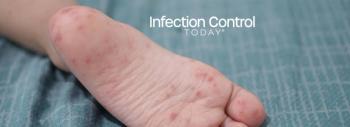
Joining Forces: Peptides and Lipopeptides Fight Bacteria
The resistance movement founded by bacteria to combat antibiotics may be losing ground. By combining key properties of two different types of weapons used by the innate defense systems of organisms, a team of scientists at the Weizmann Institute of Science has managed to design a more powerful weapon, hoping that this will provide a basis for novel and more effective antibiotics.
The first is a magnetic weapon a natural antibiotic produced by all organisms. Because these antimicrobial peptides (AMPs) are positively charged, they are attracted to the bacterias negatively charged surface like a magnet, where they can then exert their antibacterial effects. The second, detergent-like weapon called a lipopeptide is produced only by bacteria and fungi which, due to a negative charge, target mainly fungi. This weapon contains a fatty acid chain that, like similar chains in soap which dissolve dirt and oils, breaks down the fatty membranes of the fungi.
As reported in the Proceedings of the National Academy of Sciences (PNAS), professor Yechiel Shai and PhD students Arik Makovitzki and Dorit Avrahami of the Biological Chemistry Department have succeeded in combining the properties of AMPs with lipopeptides resulting in a synthetic lipopeptide that has both a positive charge and the soap-like ability to dissolve oils.
By altering the length of the fatty acid chains and the sequence of positively charged amino acids, they were able to create an array of weapons. Some are active against both bacteria and fungi, while others target just one or the other. And, as if this was not enough, they managed to design these new synthetic peptides (protein fragments) to contain only four amino acids, as opposed to the 12 to 50 found in their natural forms.
These findings will hopefully open up a whole range of potential applications. The short length of the synthetic peptide makes it attractive for drug design as it would be both easier and economically cheaper to synthesize, less prone to resistance, and potentially modified to target a large range of bacterial and fungal infections.
Shais research is supported by the Robert Koch Minerva Center for Research in Autoimmune Disease; the Prostate Cancer Research Fund; the estate of Julius and Hanna Rosen; and the Eugene and Delores Zemsky Charitable Foundation Inc. Shai is the incumbent of the Harold S. and Harriet B. Brady Professorial Chair in Cancer Research.
Source: Weizmann Institute of Science
Â
Â
Newsletter
Stay prepared and protected with Infection Control Today's newsletter, delivering essential updates, best practices, and expert insights for infection preventionists.






